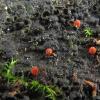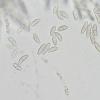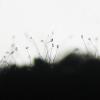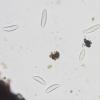
24-07-2016 20:17
Steffen LorenzHello, I found this probable Cosmospora on anothe

05-10-2017 06:10
 Danny Newman
Danny Newman
asci inamyloid Spores: 1-septate (9.3) 9.6 – 1

03-10-2017 14:52
 Rubén Martínez-Gil
Rubén Martínez-Gil
Hola a todos. Subo unas fotos de un asco que enco

27-09-2017 02:05
 Danny Newman
Danny Newman
pulled this off the ID table. it had no tag, but l

05-10-2017 00:34
Valencia Lopez Francisco JavierHola a todosLa semana pasada encontré estos ascos

04-10-2017 20:45
Jan-Arne MentkenHello everyone,some days ago I found this one on b

02-10-2017 20:43
 Edvin Johannesen
Edvin Johannesen
I am very short on sordariomycete literature and s

02-10-2017 04:20
Cvenkel MiranAny idea on not Xanthoria parietina part ?I think
I found this probable Cosmospora on another sordariomycete, probably Lasiosphaeria spermoides. But the perithecia of the Nectriaceae species are situated in areas of large decomposition of the Lasiosphaeria. So the actual substrate could also be the wood. It is Fagus sylvatica.
There is also a forest of an anamorph. It covers almost the entire part of the Lasiosphaeria. Possibly this is the anamorph of the Nectriaceae species.
Here are the data:
Perithecia: red, with a conspicuous papilla
Ascospores: 18-25 x 7-8 µm, 1-septate, constricted at the septum, warted, slightly unsymmetrical, tapering at both ends
Conidia: 27-33 x (6,5) 7,5-10 µm, 0-3-septate (mostly 3-septate), slightly curved
I know, that Nectriaceae are not studied sufficiently yet and hard to determine. Is there at least a working name or a species complex, where I can put this collection in?
Best regards
Steffen
Steffen

"Cosmospora" is very difficult without culture and molecular data.
I think your fungus could remain in the "flavoviridis" complex and the conidia that you show are not the asexual state of a Cosmospora.
You should cultivate the ascospores of your fungus to know its asexual state.
Good luke,
Christian
thank you for your answer.
How can I cultivate the ascospores? Is it likely to determine the species knowing both states?
Kind regards
Steffen

here is an abstract of a recent publication explaining how cultivate the ascospores.
Cultures of the living specimen were made on PDA (Potato Dextrose
Agar) with 5 mg/l of streptomycin in Petri dishes 9 cm diam. A mass
of ascospores and asci was removed from a perithecium with a fine
needle and placed in a drop of sterile water that was stirred with a
needle to distribute the elements on the slide. A part of the drop
containing ascospores was placed on PDA using a sterile micropipette,
then the Petri dish was incubated at 25°C.
Cheers,
Christian
thank you. Let's see, I am going to try it.
Regards
Steffen
a friend of mine and I tried to cultivate the anamorph of the fungi. He works at a laboratory. We used CPA (Carrot piece agar), which should be one of the most suitible media for macroconidia of Fusarium, and SNA. But both samples were overgrown by Penicillium spec. I think I am not able to get the anamorph. Is there a researcher, who is interested in it? Maybe Amy Rossman, Gary Samuels or you?
Best regards
Steffen



